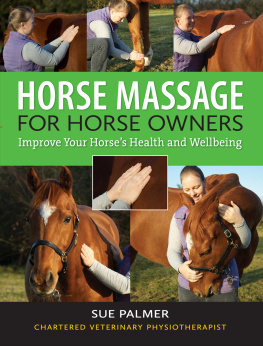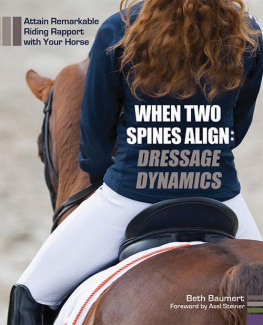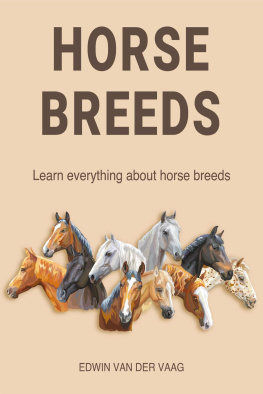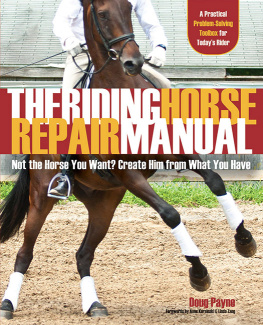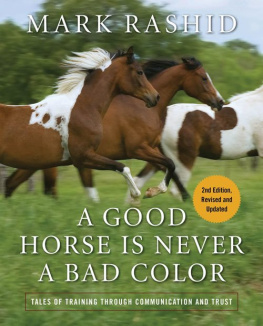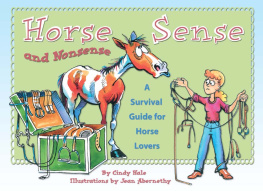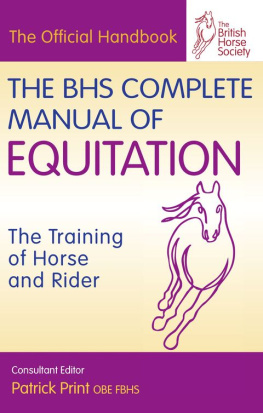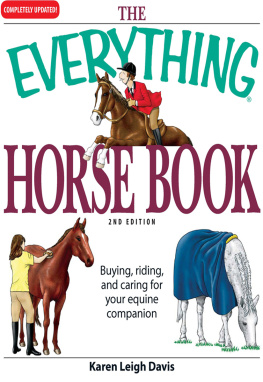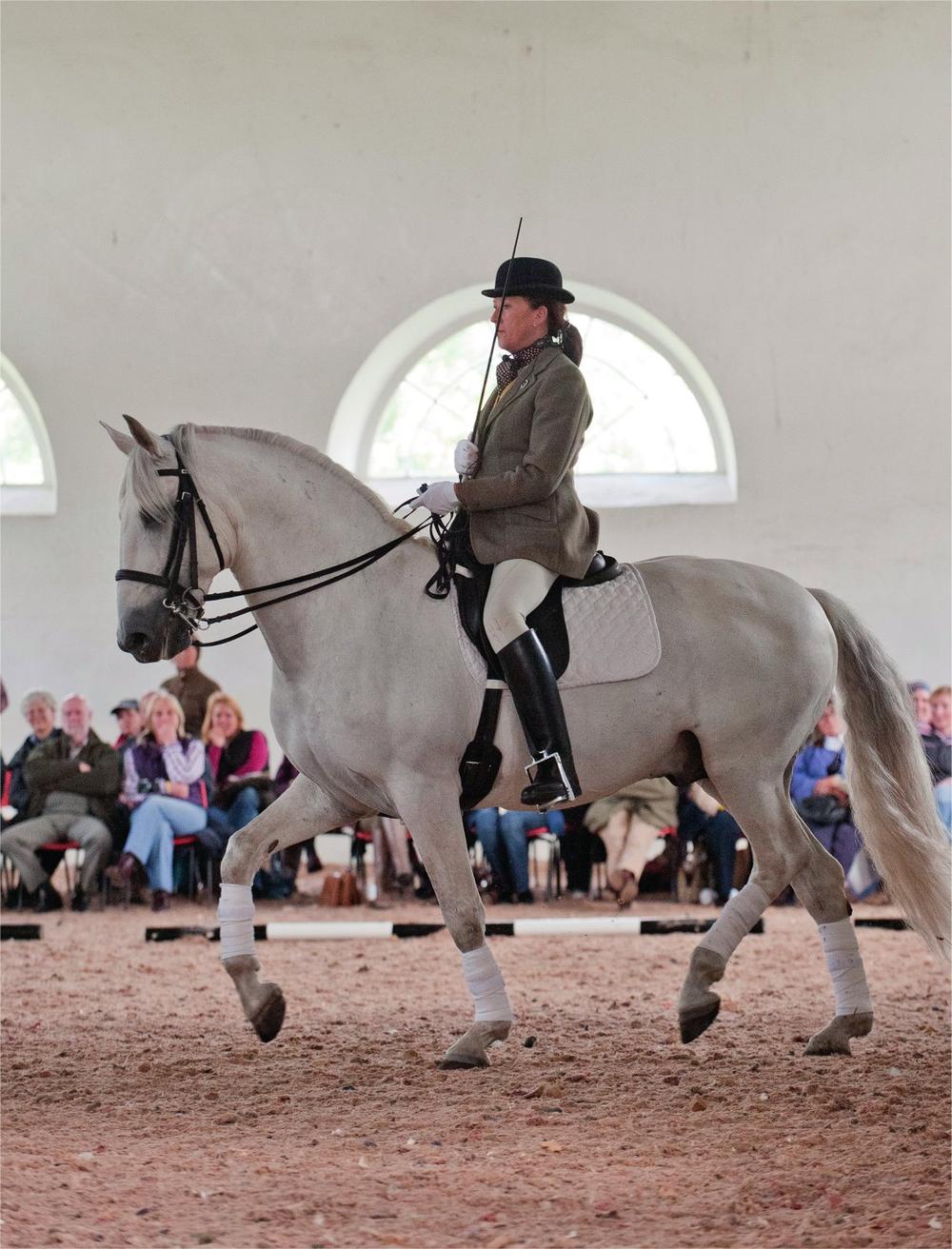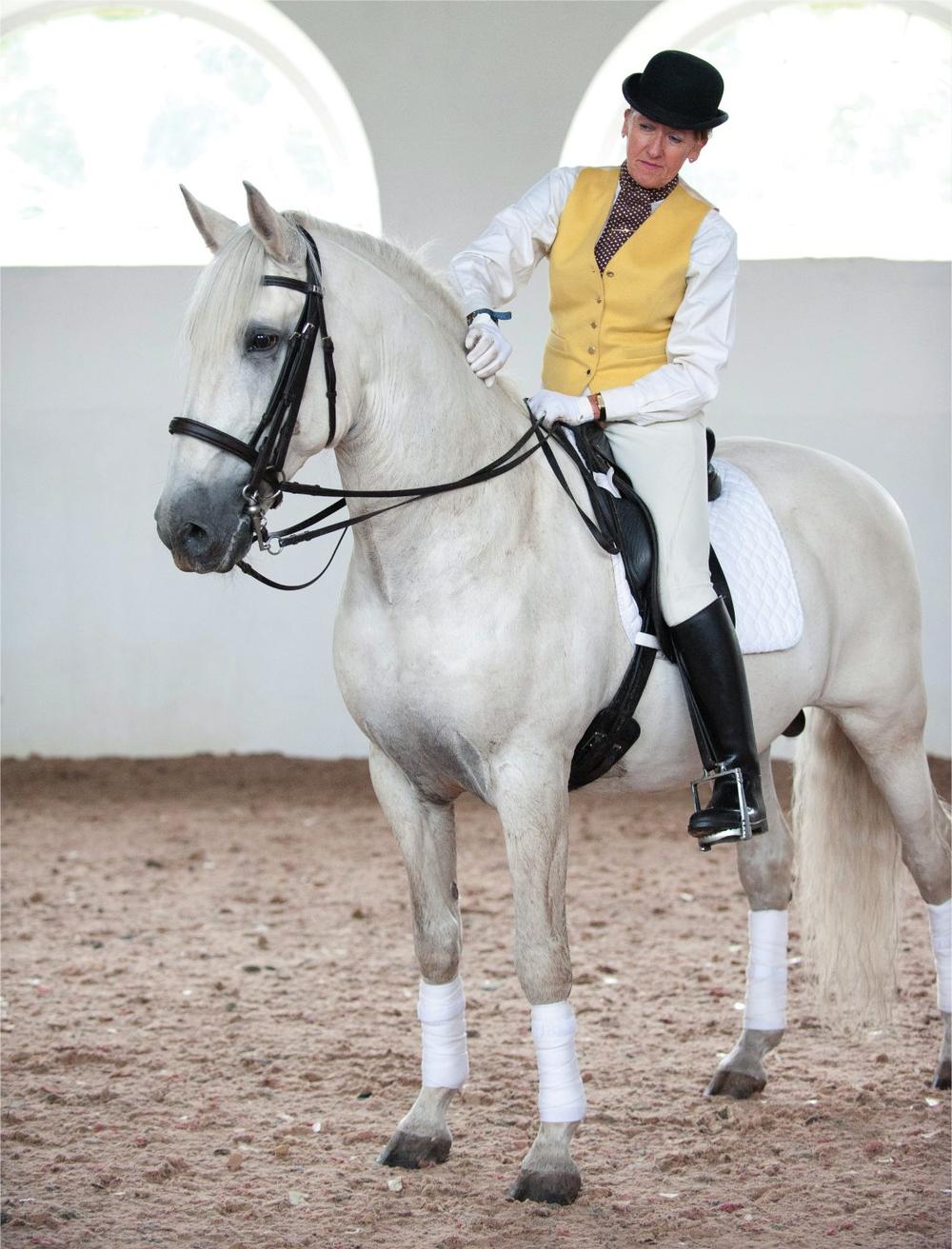By Carl Hester MBE
D RESSAGE IS QUITE SIMPLY about training and to be able to train a horse the rider needs to be able to communicate to the horse in a clear way no mixed signals! Whilst I am training my horses and riders as athletes for competition, I believe that every horse and every rider will get more out of their relationship if the rider understands and works to make his or her signals to the horse as clear as possible.
I have known of Sylvias work over several years and from time to time weve met at various equestrian events the Spanish Riding School of Vienna involvement being something we both share in common. Sylvias books are widely read throughout the dressage world and it is a pleasure to be asked to write about The Balanced Horse.
What riders need to understand about the aids the signals is the subtleties and Sylvia explains the feel, position and timing in a user-friendly way that will help any rider at any level.
When I started my dressage career I was very lucky to ride some advanced schoolmaster horses which took some of the trial and error out of the equation. Unfortunately, not everyone gets that sort of opportunity so a book like this will be invaluable to all those who are seeking to get it right from the start, and develop their own awareness of how their aids influence the horse.
Even at Grand Prix level, riders can still make mistakes and even the best horse in the world can only do what the rider has told him. Now, with the help of Sylvias book, riders of all levels can build up a real mental picture in their head of what they should or should not be doing for each and every movement. I believe this to be one of the most important aspects of dressage as the horse can read us like a book, but once we have got it right in our head, he will follow. The quotes at the end of each chapter from riders and trainers from previous centuries to present day make a fascinating and inspiring addition a proof that correct communication will work with any horse, whatever his breed, colour or size.
Best wishes
CARL
H AVING PRONOUNCED, a few years back, that I did not feel motivated to write another book on schooling and dressage since I felt I had said it all I surprised myself by accepting a request for another book by my commissioning editor John Beaton of Kenilworth. If truth be known, it was the photographs that inspired me.
In May, 2011, great friends of ours, Henry and Eugenie Askew, reopened their stunning nineteenth-century indoor riding school at the family home, Ladykirk in Berwickshire. Their new tenant was Lucy Simpson, who had come to me for dressage lessons. As a qualified Monty Roberts instructor, she was looking for somewhere in the Borders to start up a training yard, so I had introduced her to the Askew family.
Years of painstaking research, careful planning and love had gone into the restoration of Ladykirks classical buildings. To celebrate the transformation of the indoor school, Henry generously gave me permission to hold my annual BHS Borders Festival of the Horse demonstration within its lofty portals.
Dressage in Lightness was to bring in literally hundreds of people and I know quite well that it was certainly as much to do with seeing Ladykirk as it was to seeing me riding and teaching! By this time, Lucy was installed and the beautiful stables were brimming with horses. Present at the event were a number of photographers, including some good friends, and it is from their work that the first seeds for another book were sown.
We have had thousands of photos taken over the years, mainly for magazine articles, yet nothing prepared me for the sheer drama of these pictures. My once dappled grey Lusitano stallion, now aged 16, and white as snow, etches himself on those austere white walls with energy and poise. Prazer first came to my yard, unbalanced, stumbling and knowing nothing of dressage; now all those years of training, his patient endeavour seem cemented in each image. A special afternoon, a great audience, a fantastic backdrop quite clearly the nobility of the horse, the proof of what dressage means to me had to be shared.
The idea of a purely photographic book was discussed. I sent John the photos and the response was immediate: he and Kenilworth Press wanted go ahead. At the time, I was experiencing severe illness within the family and a lot of difficulties at home so I knew hours of writing would be impossible. How about a book on the aids, I suggested, with just captions? That, I could just about manage. The response was not exactly what I had in mind, But without prose to accompany those magnificent pictures, Sylvia The sentence did not need completing.
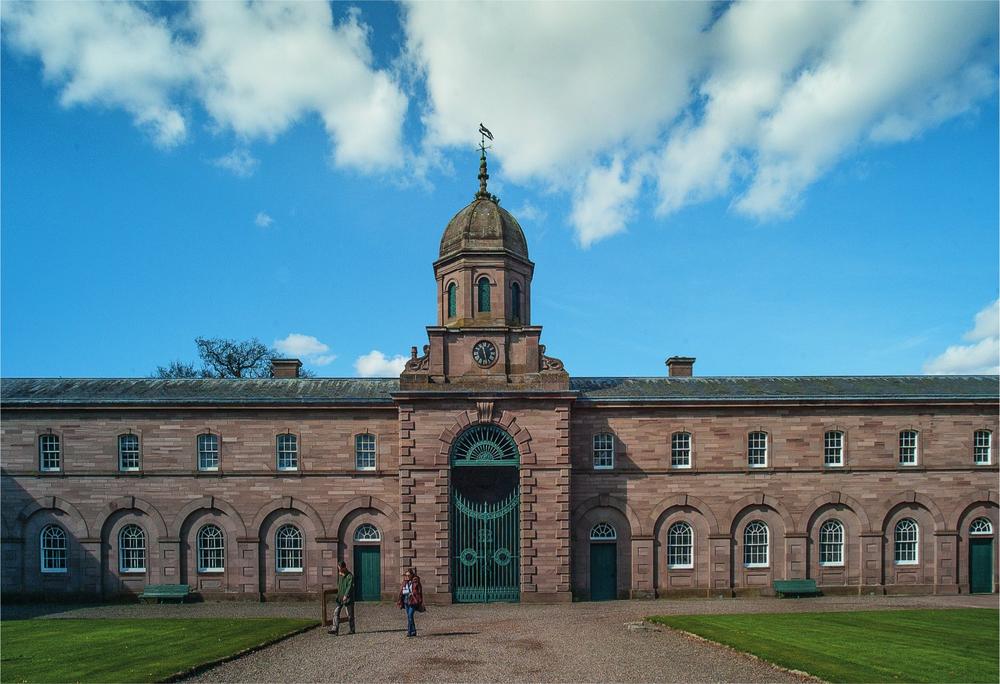
Ladykirk Stableyard, built in 1840 and designed by Mr Tattersall of Pall Mall (photograph by Stefan Lubomirski de Vaux).
A synopsis was sent and accepted. I began writing. How does one explain when a book takes on a life of its own? During this time of worry and heartache , I found the will and the inspiration to write properly. My daughter has always been one hundred per cent behind me with all my work, and I am very lucky to have some wonderful friends, but where and how was I going to find the time?
I can only say that, from somewhere deep down, I found the strength and the inspiration to make time. Sometimes, you just have to shut yourself away and commit.


